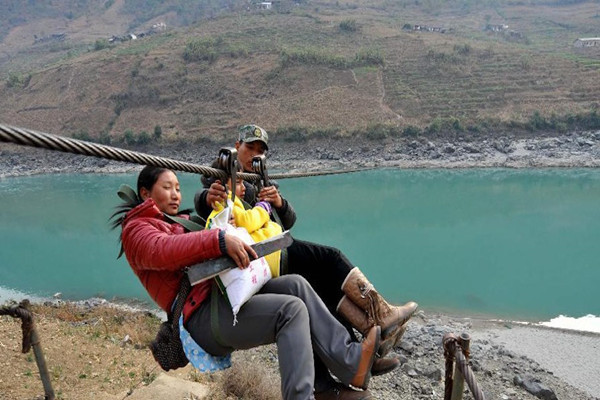
Dulong Ethnic Minority
Dulong ethnic group (独龙族) is one of the minorities with a small population in China, and is the minority with the smallest population in Yunnan province. Dulong people speak Dulong language, but they have no their own written language. Dulong minority has the habit of facial tattoo. They believe in the spirit of all things, worship natural objects.
Distribution
Dulong ethnic minority is mainly distributed on the both sides of Dulongjiang river and Nujiang river in Gongshan County of Nujiang, as well as in the neighboring Qile township(齐乐乡) of Weixi county and Zayu county of Tibet. There are also many Dulong people living in Myanmar.
Festival of Dulong Ethnic Minority
The only traditional festival of the Dulong ethnic minority is celebrating the New Year, which is called “Kaquewa(卡雀哇)” in the Dulong language. Generally, it is celebrated in the 11st lunar month, that is every year from December to January in the following year. Without fixed date, specific day is chosen by each village oneself. The duration of the festival always depends on the quantity of food prepared, two or three days, or four or five days. During the festival, people sit around the fireplace, interchanging greetings, holding grand hunting ceremony, and offer sacrifices to ghosts and mountain gods, sing and dance until midnight. More About Dulong Ethnic Minority
Jin Xiuying- Inheritor of Dulong Textile Craft in Gongshan County, Nujiang Dulongjiang Town Dulong Ethnic Culture Protection Area in Gongshan County, Nujiang Folk Songs of Drung Ethnic Minority in Gongshan County Language of Drung Ethnic Minority Kaquewa Festival of Dulong Ethnic Minority

 7 Days GolfingTour
7 Days GolfingTour
 8 Days Group Tour
8 Days Group Tour
 8 Days Yunnan Tour
8 Days Yunnan Tour
 7 Days Shangri La Hiking
7 Days Shangri La Hiking
 11 Days Yunnan Tour
11 Days Yunnan Tour
 6 Days Yuanyang Terraces
6 Days Yuanyang Terraces
 11 Days Yunnan Tour
11 Days Yunnan Tour
 8 Days South Yunnan
8 Days South Yunnan
 7 Days Tea Tour
7 Days Tea Tour
 8 Days Muslim Tour
8 Days Muslim Tour
 12 Days Self-Driving
12 Days Self-Driving
 4 Days Haba Climbing
4 Days Haba Climbing
 Tiger Leaping Gorge
Tiger Leaping Gorge
 Stone Forest
Stone Forest
 Yunnan-Tibet
Yunnan-Tibet
 Hani Rice Terraces
Hani Rice Terraces
 Kunming
Kunming
 Lijiang
Lijiang
 Shangri-la
Shangri-la
 Dali
Dali
 XishuangBanna
XishuangBanna
 Honghe
Honghe
 Kunming
Kunming
 Lijiang
Lijiang
 Shangri-la
Shangri-la
 Yuanyang Rice Terraces
Yuanyang Rice Terraces
 Nujiang
Nujiang
 XishuangBanna
XishuangBanna
 Spring City Golf
Spring City Golf
 Snow Mountain Golf
Snow Mountain Golf
 Stone Mountain Golf
Stone Mountain Golf















